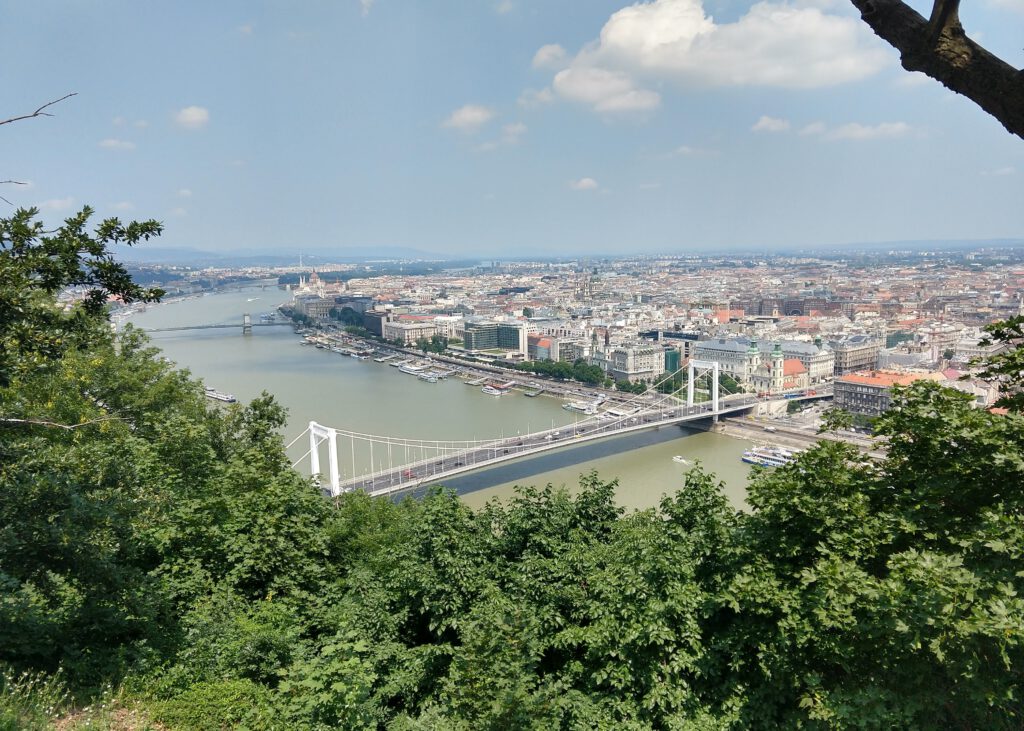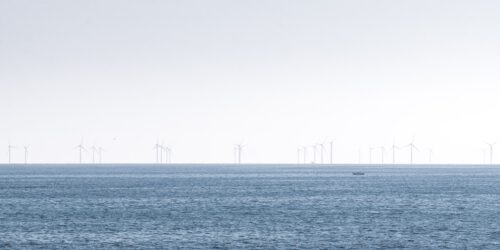The History of Rivers Can Teach Us About Disruption in the 21st Century

This post by Anita Lazurko originally appeared as part of a series on Environmental Histories of the Future on NiCHE, the Network in Canadian History & Environment.
The 21st century is expected to be a time of increasing disruption. Technological innovation is outpacing our ability to fully comprehend its implications. Our financial and economic systems have become extremely complex. Wealth inequality is growing, and natural resource consumption is pushing the biosphere past irreversible tipping points. In this time – what some people call the Anthropocene – humans are a defining force shaping Earth’s social and ecological future. Yet, the complexity of our increasingly globalized and interconnected systems transcend our ability to fully predict and control their behaviour. COVID-19 pandemic is a perfect example; while it appears to be a black swan, experts warned that a pandemic was an uncertain yet plausible outcome of complex social and ecological interactions.
The nature of 21st century disruption appears unique, but the long history of humanity’s relationship to rivers is punctuated by annual lotteries of unpredictable events, such as floods and droughts. Humans have used water retaining structures dating back approximately 5,000 years, but the use of large-scale concrete infrastructure systems to predict and control variability spread around the world throughout the 20th century. Now, climate change is exposing new vulnerabilities in these rigid, engineered systems. Thus, the history of people’s relationship to rivers around the world offers important lessons about navigating 21st century disruption.
The history of rivers teaches us that change is inevitable, and our solutions will have unintended long-term consequences.
Rivers are essential to diverse aspects of human life. The Danube River is central to Budapest’s beauty while transporting goods to the rest of Europe, and the Ganges River is worshipped as the Hindu goddess Ganga while providing drinking water and irrigation to millions of people. However, these river ecosystems are complex, defined by fast and slow regulatory processes that introduce unpredictable and surprising behaviour. Just as fire regulates cycles of renewal and regeneration in forests, major flood events regulate the distribution of nutrients and organic matter in a river or delta. Similarly, slow natural erosion shifts a river’s path over time, while land clearance can cause a quick and irreversible regime shift in a river’s channel position.
From the 17th to 19th centuries, the Netherlands used various forms of drainage to transform lakes into agricultural land, and, similarly, transformed land back into lakes, as required by industry or agriculture. Now, the Dutch water management system of dikes and channels is used to hold back the sea and transport goods. While this system is a product of changing economic interests over time, the long-term environment responded in unexpected ways, such as through channel erosion, which now continues at a rate of one metre per century. Additionally, major parts of the Netherlands, sitting one to six metres below sea level, are vulnerable to climate change-induced sea level rise. When viewed over multi-century time scales, a pattern emerges: solutions designed to address an immediate, short-term problem created unintended long-term consequences.

The history of rivers demonstrates the paradox of prediction and control.
Industrialization brought the use of large-scale infrastructure to manage floods and droughts to river basins around the world. Governments constructed large-scale hydropower dams, channelized rivers, removed excess vegetation from river channels, and established centralized water management institutions, all in efforts to reduce uncertainty by storing and controlling the flow of water. Now, 58,000 large dams (i.e., higher than 15 metres) define the landscape of river systems globally. For decades, these large-scale concrete infrastructure systems enabled rapid economic development and provided a source of renewable energy.
More recently, climate change is exposing the vulnerabilities of a paradigm of water management built on prediction and control. Water systems made up of grey infrastructure like channels, dikes, and dams were conventionally designed to handle variability in terms of probability, such as the 1-in-100-year flood event. However, as concentrations of global greenhouse gas emissions rise, the frequency and severity of extreme hydrological events is expected to increase beyond historical baselines. Under these conditions of deep uncertainty, historical risk probabilities (e.g. 1-in-100-year floods) become unreliable and future regional climate scenarios become impossible to predict.
Unfortunately, centralized dams and channelized rivers, designed according to a “most-likely” climate future, may not be robust enough to accommodate these increasing climate extremes. Moreover, dams and artificial channels lack the natural resilience of vegetated riverbanks and distributed storage systems and are thus vulnerable to more extreme climate scenarios. In other words, nature can act as a natural sponge by absorbing, redistributing, and storing excess water throughout a landscape to deal with extreme floods and droughts, but concrete dams and channels cannot. Scientists and engineers are promoting new practices in response. Adaptive plans and no-regrets policies are meant to achieve their desired outcomes regardless of the climatic or socio-economic scenario. Rather than optimizing infrastructure to a single function (e.g., water supply) or climate scenario, engineers are evaluating infrastructure for their contribution to multiple objectives and for robustness against a wide range of scenarios. Governments are dechannelizing to make “room for the river,” and ecosystems are increasingly used as “natural infrastructure” or “nature-based solutions” due to their natural ability to absorb and adapt to disruption.

The history of rivers teaches us to question – and potentially transform – our assumptions about what it means to thrive under uncertainty and change.
Achieving more just and sustainable futures amid 21st century disruption is perhaps the greatest challenge of our time. Just as water managers continue to adapt to unforeseen outcomes of past solutions, humanity is experiencing 21st century problems as a product of 20th century ingenuity. Coal-fired power plants and plastics were once symbols of progress, but their cumulative impact on atmospheric CO2 and ocean ecology now outweigh their benefits. These long-term outcomes that we and future generations will experience as life-altering shifts to our environment are not considered in the linear and short-term thinking that dominates decision making.
Resilience scientists view disruption and unintended consequences as inevitable parts of sequential patterns of growth, development, crisis, and reorganization typical of linked human-natural systems. From this view, disruption and crisis are inevitable, resulting in destruction but also offering opportunities for renewal. These scientists have long known that systems focused narrowly on efficiency and control may become brittle to these cycles of change, calling for greater diversity, flexibility, and adaptability in our systems and responses. Moreover, they see disruption as creating windows of opportunity to pursue systemic change toward social justice and sustainability. In the face of repeated 21st century disruptions, rivers teach us to temper our desire to fully predict and control them. Instead, we must find opportunities to take the long view, to nurture our ability to adapt and innovate our responses, and to prepare for crisis as a window of opportunity for systemic change.
*Cover image credit: The iconic Danube River running through the city of Budapest, Hungary. Photo by author.






I am working with Warwick University History Department in developing short 3rd year research projects hopefully in conjunciton with the Warwickhsire County Council Flood Managment team and this webpage is an ideal introduction to rivers for a history undergraduate.